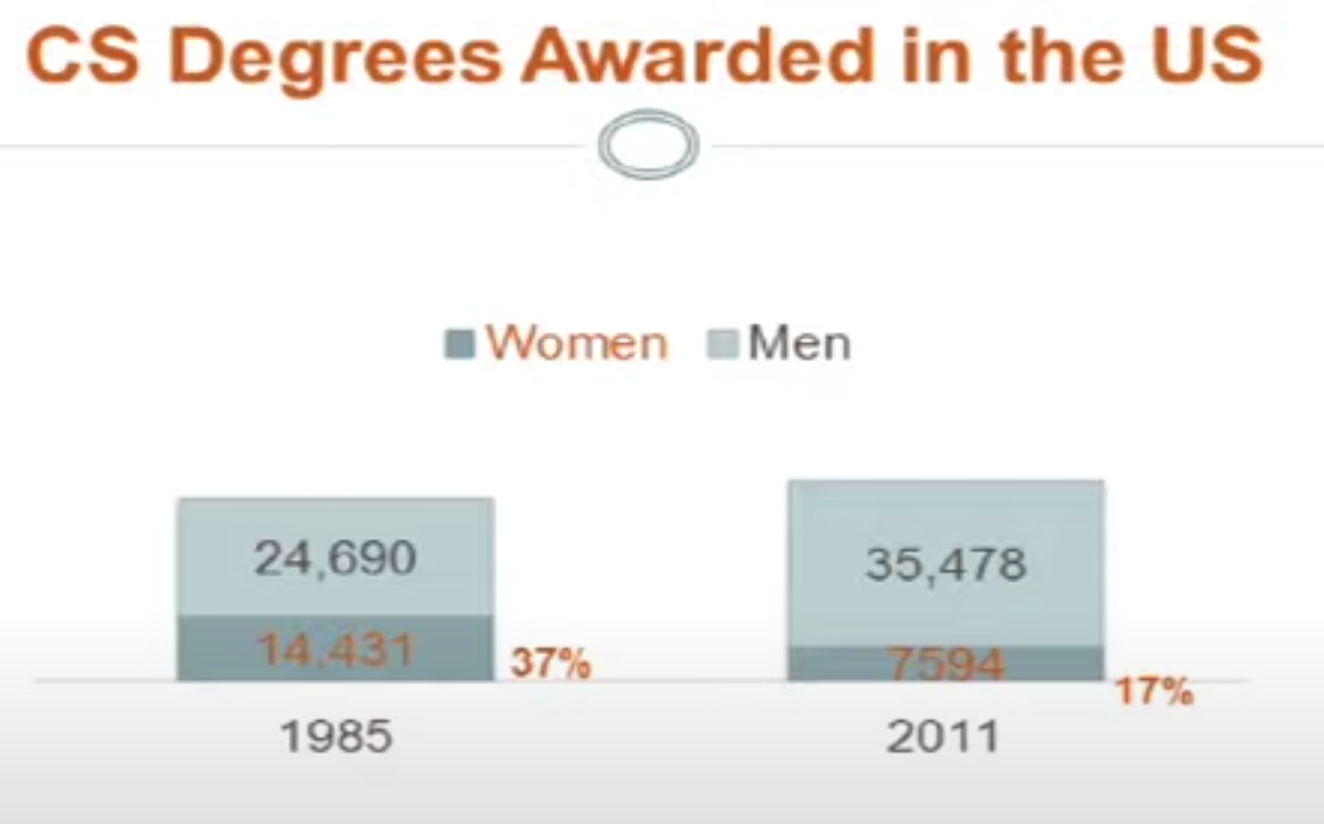Bringing women into TECH is no Rocket Science
I listened to the TED talk "Women in tech - the missing force: Karen Catlin". Karen starts her story in 1985, when 37% of computer science degrees went to women. Today in Belgium and in many other places, this percentage has dropped dramatically to below 20%.
Why did this drop happen?
Karen Catlin suspects it has to do with the fact that IBM launched the first PC in 1981 and Apple introduced its Macintosh in 1984. Before then, there were no computers in the home and therefore the "experience" one could have with IT was nil when deciding what to study. For whatever social reason, boys spend more time on computers than girls. This could explain the advantage or the perception that boys are more attracted to PCs, coding and computer science.
This anecdote does not help today. It does tell us that women are and can be good at computer science. We need more women in the TECH to meet the need for talent that is growing by the day and was researched by Agoria within their project "Be the Change".
So, let's look at positive examples of how we can get more #womeninTECHand Computer Science:
Harvey MUDD College
Since 2005, HMC has increased the percentage of female students in computer science from an average of almost 12% to about 40%, where it has remained stable for the past four years. This percentage is close to the overall percentage of women at HMC. In 2018, HMC announced that an incredible 58% of physics majors and 56% percent of computer science majors were women.
What HMC did - three changes:
First, they have replaced the traditional CS1 curriculum with a breadth-first approach that gives students substantial programming experience in a variety of application areas and exposure to some of the most important intellectual and social contributions of our field.
Second, HMC introduced summer research experiences aimed at rising sophomores - with no background other than CS1 required. They designed these research projects to deepen the students' experience of the real problems computer scientists work on and to help them gain confidence in their abilities to make a meaningful contribution to these endeavours.
Thirdly, they started taking a significant number of first-year students to the Grace Hopper Celebration of Women in Computing (GHC).
Carnegie Mellon University
CMU has been exceeding national averages for many years. They went from 10% women in computer science in 2006, the year Maria Klawe took over as college president, to 40% women in CS in 2012. The school gained further attention when the percentage of women enrolled in the CS major reached 48%, 49% and nearly 50% of all students in 2016, 2017 and 2018 respectively.
The success in a nutshell: for women to be successful in CS, we had to change the #culture and environment and develop and support programmes that work to level the playing field without making women feel like a separate species.
What CMU did:
CMU dropped the programming/CS background requirement from the admission criteria and added leadership potential, while maintaining high SAT scores, especially in maths and science.
They worked with secondary schools to develop more gender-neutral classes.
CMU added an introductory lesson on "CS and its impact on society", which proved very attractive to women.
Last but not least, they have set up a "big-sister little sister" mentoring programme for female students.
College of William & Mary
In the 2019-2020 academic year, 73 students earned a bachelor's degree in computer science from William & Mary. About 30% of these graduates were women and the other 70% were men.
What WM has done:
Much of the effort has focused on finding female mentors for young students.
The university sent a group of students to the annual Grace Hopper conference for women technologists. "Showing women that they are not alone, that there are other women in computing who love what they do, that's important," she said.
The female students do a community outreach to younger women in high schools.
Conclusion:
𝗕𝗿𝗶𝗻𝗴𝗶𝗻𝗴 𝘄𝗼𝗺𝗲𝗻 𝗶𝗻𝘁𝗼 𝗧𝗘𝗖𝗛 𝗶𝘀 𝗡𝗢 🚀 𝗥𝗼𝗰𝗸𝗲𝘁 🚀𝗦𝗰𝗶𝗲𝗻𝗰𝗲 !
Let's just do it.
Sources and links:
TED Talk
https://www.youtube.com/watch?v=8uiEHaDSfgI
HMC programme
CMU
William & Mary's
https://www.wm.edu/news/stories/2018/disrupting-the-brogrammer-culture.php
Grace Hopper Conference - the greatest conference for women in tech.

